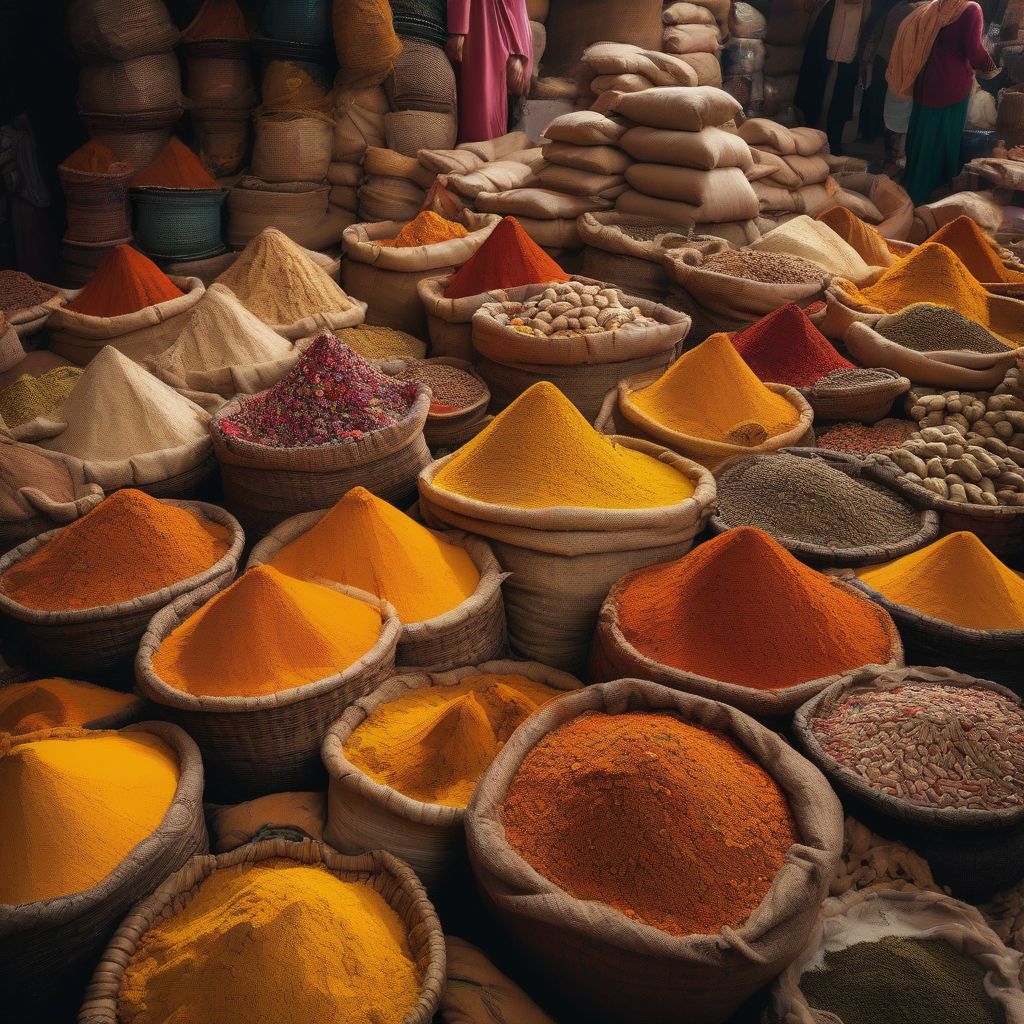Have you ever experienced the intoxicating aromas and vibrant flavors of Middle Eastern cuisine? It’s a sensory journey that transports you to bustling marketplaces filled with exotic spices. But Middle Eastern cooking isn’t just about the taste; it’s an art form that skillfully blends spices, creating a symphony of flavors that dance on your palate. As a nutritionist and meal-prep coach, I’m passionate about helping people live healthier lives, and exploring the world of spices is a delicious way to do just that. So, let’s embark on a culinary adventure, diving deep into the heart of Middle Eastern kitchens to uncover the secrets of their spice racks.
The Significance of Spices in Middle Eastern Cuisine
In the world of Middle Eastern cooking, spices are more than just ingredients; they’re storytellers. Each spice carries centuries of history, tradition, and cultural significance. They’re used to preserve food, enhance flavors, and even offer medicinal benefits. From the warm embrace of cinnamon to the earthy notes of cumin and the citrusy zest of sumac, every spice plays a vital role in creating the unique flavor profiles that define this region’s cuisine.
A Journey Through the Spice Palette
Let’s take a closer look at some of the star players in the Middle Eastern spice rack:
1. Cumin: With its warm, earthy flavor, cumin is a cornerstone of Middle Eastern cooking. It adds depth to meat dishes, enhances the flavors of vegetables, and even lends its warmth to lentil soups.
2. Coriander: Often paired with cumin, coriander offers a slightly citrusy, lemony flavor that balances out the earthiness of cumin. It’s commonly used in spice blends, tagines, and stews.
3. Turmeric: Known for its vibrant golden hue and slightly bitter, earthy flavor, turmeric is a staple in many Middle Eastern dishes. It’s often used in rice dishes, stews, and even some desserts, adding a touch of color and warmth.
4. Cinnamon: Cinnamon evokes a sense of warmth and comfort, making it a beloved spice in both sweet and savory dishes. It’s used to flavor meat dishes, rice pilafs, and is a key ingredient in many traditional desserts.
5. Cardamom: This spice brings a unique blend of sweet and savory notes to Middle Eastern cuisine. It’s used in coffee, desserts, and even some meat dishes, adding a touch of complexity and fragrance.
6. Saffron: Prized for its distinct aroma, flavor, and vibrant color, saffron is a precious spice used sparingly in Middle Eastern cooking. It’s often used to infuse rice dishes, desserts, and even tea with its luxurious touch.
7. Sumac: With its tart, lemony flavor, sumac adds a refreshing twist to Middle Eastern dishes. It’s commonly sprinkled over hummus, salads, and grilled meats, providing a burst of acidity.
Health Benefits of Middle Eastern Spices
Beyond their flavor-enhancing properties, many Middle Eastern spices boast impressive health benefits:
- Turmeric: Contains curcumin, a powerful antioxidant with anti-inflammatory properties.
- Cinnamon: May help regulate blood sugar levels and improve insulin sensitivity.
- Cumin: A good source of iron and may aid in digestion.
- Coriander: May help lower cholesterol levels and has antioxidant effects.
Tips for Using Spices Like a Pro
- Toasting: Enhance the flavor of whole spices by toasting them in a dry skillet over low heat until fragrant. Grind them before using.
- Blooming: Release the aromas of ground spices by sautéing them briefly in oil or butter at the beginning of cooking.
- Balancing Flavors: Experiment with different spice combinations to create balanced and harmonious flavors.
- Freshness is Key: Store spices in airtight containers in a cool, dark place to preserve their freshness.
 Vibrant Middle Eastern Spice Market
Vibrant Middle Eastern Spice Market
Exploring Middle Eastern Cuisine at Home
One of the best ways to truly appreciate the nuances of Middle Eastern spices is to roll up your sleeves and get cooking!
- Start with Simple Recipes: Begin with dishes that feature a few key spices, such as hummus, lentil soup, or a simple chicken tagine.
- Explore Spice Blends: Experiment with pre-mixed spice blends like za’atar, ras el hanout, or baharat, each offering a unique flavor profile.
- Be Adventurous: Don’t be afraid to adjust spice levels to your liking and try new combinations.
Conclusion
Exploring the world of Middle Eastern spices is an adventure for the senses. These aromatic treasures not only elevate the flavors of food but also offer a glimpse into the rich history and traditions of the region. By incorporating these spices into your cooking, you can add depth, complexity, and a touch of exotic flair to your meals.
So, why not embark on a culinary journey of your own? Experiment with different spices, discover new flavor combinations, and experience the magic of Middle Eastern cuisine firsthand. And for those seeking a deeper dive into the art of pairing Middle Eastern food and beverages, check out this insightful article: How to Pair Middle Eastern Food with the Right Beverages.
Do you have any favorite Middle Eastern spices or dishes? Share your culinary adventures in the comments below!
[amazon bestseller=”middle eastern cookbook”]
